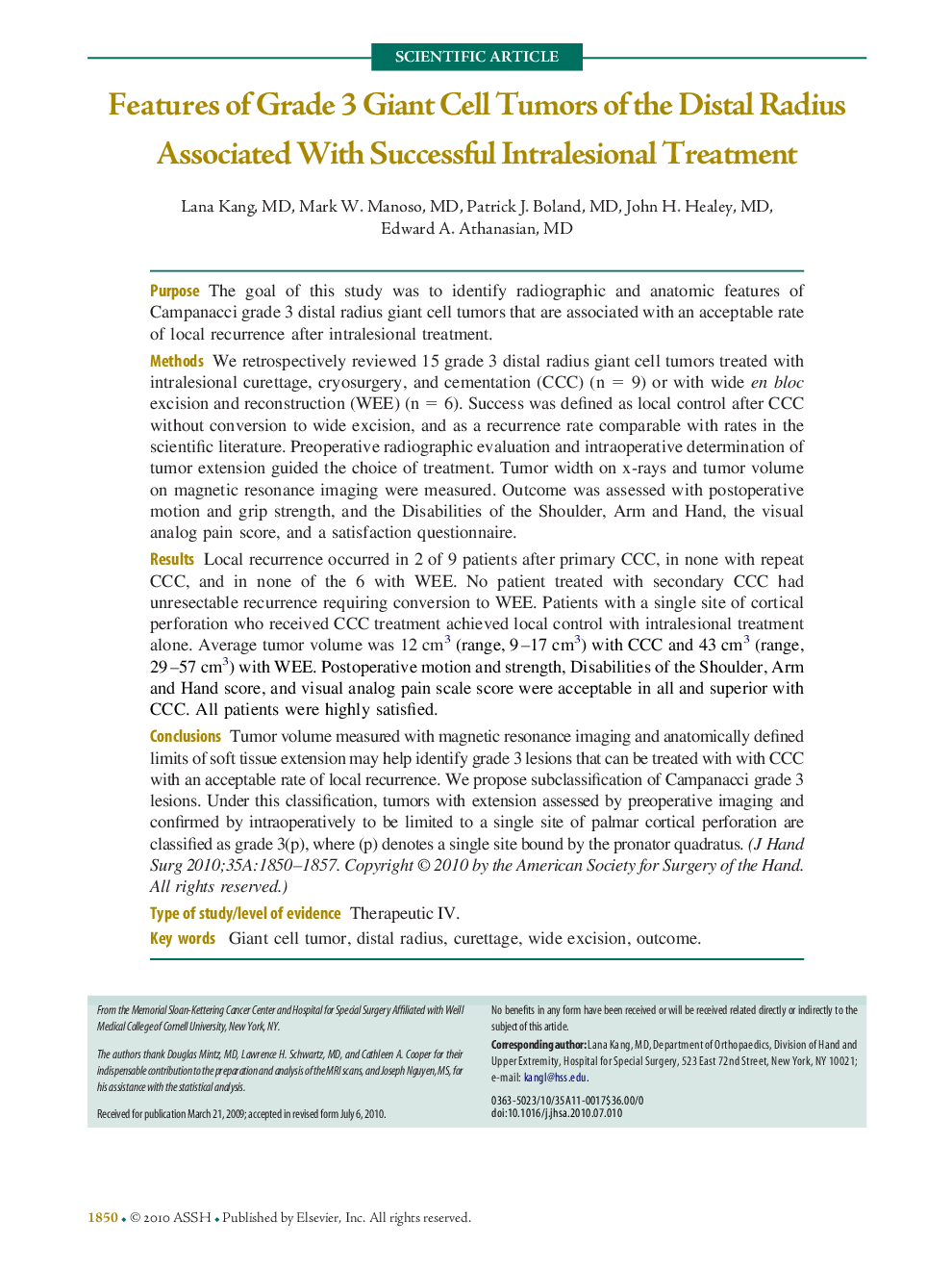| Article ID | Journal | Published Year | Pages | File Type |
|---|---|---|---|---|
| 4070040 | The Journal of Hand Surgery | 2010 | 8 Pages |
PurposeThe goal of this study was to identify radiographic and anatomic features of Campanacci grade 3 distal radius giant cell tumors that are associated with an acceptable rate of local recurrence after intralesional treatment.MethodsWe retrospectively reviewed 15 grade 3 distal radius giant cell tumors treated with intralesional curettage, cryosurgery, and cementation (CCC) (n = 9) or with wide en bloc excision and reconstruction (WEE) (n = 6). Success was defined as local control after CCC without conversion to wide excision, and as a recurrence rate comparable with rates in the scientific literature. Preoperative radiographic evaluation and intraoperative determination of tumor extension guided the choice of treatment. Tumor width on x-rays and tumor volume on magnetic resonance imaging were measured. Outcome was assessed with postoperative motion and grip strength, and the Disabilities of the Shoulder, Arm and Hand, the visual analog pain score, and a satisfaction questionnaire.ResultsLocal recurrence occurred in 2 of 9 patients after primary CCC, in none with repeat CCC, and in none of the 6 with WEE. No patient treated with secondary CCC had unresectable recurrence requiring conversion to WEE. Patients with a single site of cortical perforation who received CCC treatment achieved local control with intralesional treatment alone. Average tumor volume was 12 cm3 (range, 9–17 cm3) with CCC and 43 cm3 (range, 29–57 cm3) with WEE. Postoperative motion and strength, Disabilities of the Shoulder, Arm and Hand score, and visual analog pain scale score were acceptable in all and superior with CCC. All patients were highly satisfied.ConclusionsTumor volume measured with magnetic resonance imaging and anatomically defined limits of soft tissue extension may help identify grade 3 lesions that can be treated with with CCC with an acceptable rate of local recurrence. We propose subclassification of Campanacci grade 3 lesions. Under this classification, tumors with extension assessed by preoperative imaging and confirmed by intraoperatively to be limited to a single site of palmar cortical perforation are classified as grade 3(p), where (p) denotes a single site bound by the pronator quadratus.Type of study/level of evidenceTherapeutic IV.
